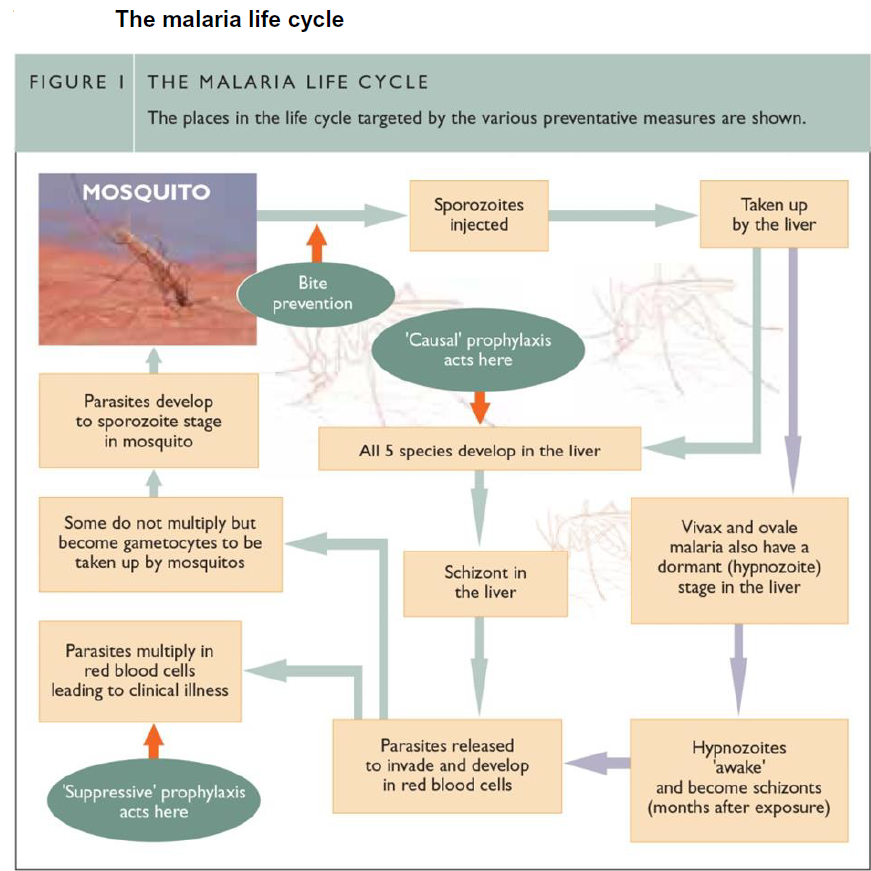Pathology
In humans, malaria can be caused by different species of Plasmodium: (1)
- P. vivax and P. ovale which cause benign tertian malaria
- P. falciparum which causes malignant tertian malaria
- P. malariae which causes benign quartan malaria
- Plasmodium knowlesi - very rarely imported at present, but capable of producing severe illness
Humans, who are the intermediate hosts, become infected by the bite of an infected female Anopheles mosquito.
- the mosquito injects around 10-15 sporozoites (the infecting agent) in to the blood circulation which circulates and enters liver cells
- theses sporozoites divide inside liver cells into a schizont containing approximately 30,000 offspring (merozoites) which are released into the bloodstream when the schizont ruptures
- vivax and ovale malaria also have a dormant (hypnozoite) stage in the liver which may ‘awake’ and become schizont (months or even years after exposure)
- merozoites invades erythrocytes, grows and divides inside them over 24 hours (P.knowlesi), 48 hours (P. falciparum, vivax or ovale) or 72 hours (P. malariae) to form between 8 and 32 parasites, whereupon the red cell bursts to release them to infect new red cells
- these cycles in the red cells continue, increasing the numbers of parasites in the infected person and this asexual erythrocytic stage is responsible for the clinical symptoms of the disease (2)
- some merozoites develop into gametocytes (sexual stages) which may stay in circulation for several weeks. These gametocytes are taken up by the biting mosquitos where sexual reproduction occurs leading to formation of new infectious sporozoites inside mosquitos (thus completing the life cycle) (1,2)

The parasite can also be transmitted by blood transfusion, transplacentally, organ transplantation and via the use of improperly cleaned syringes.
Reference:
- Miller LH, Baruch DI, Marsh K, et al. The pathogenic basis of malaria. Nature. 2002 Feb 7;415(6872):673-9.
- Centers for Disease Control and Prevention. Clinical guidance: malaria diagnosis & treatment in the U.S. Jun 2024 [internet publication].
Related pages
Create an account to add page annotations
Annotations allow you to add information to this page that would be handy to have on hand during a consultation. E.g. a website or number. This information will always show when you visit this page.